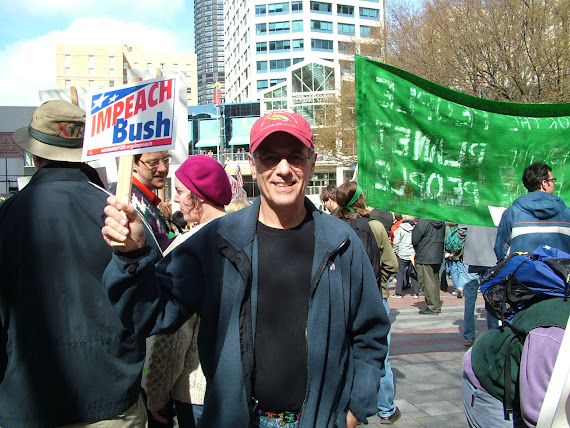There are three general types of criminal conspiracies. These are the so called wheel or hub-and-spoke type conspiracy, the chain conspiracy and the enterprise (RICO) conspiracy.
In a classic wheel or hub-and-spoke conspiracy a central core of conspirators recruits separate groups of co-conspirators to carry out the various functions of the illegal enterprise. See Kotteakos v. United States, 328 U.S. 750, 755, 66 S.Ct. 1239, 90 L.Ed. 1557 (1946). In such a conspiracy the core conspirators are the hub and each group of co-conspirators form a spoke leading out from the center in different directions. Kotteakos, 328 U.S. at 755, 66 S.Ct. 1239. The core conspirators move from spoke to spoke directing the functions of the conspiracy. Id.
However where the “spokes” of a conspiracy have no knowledge of or connection with any other, dealing independently with the hub conspirator, there is not a single conspiracy but rather there are as many conspiracies as there are spokes. Kotteakos, at 754-55, 66 S.Ct. 1239. To follow the wheel metaphor, establishing a single conspiracy generally requires that the Government supply proof that the spokes are bound by a "rim"; that is, the circumstances must lead to an inference that some form of overall agreement exists. "[F]or a wheel conspiracy to exist, those people who form the wheel’s spokes must have been aware and must do something in furtherance of some single, illegal enterprise. If not, there is no rim to enclose the spokes.” United States v. Levine, 546 F.2d 658, 663 (5th Cir.1977) (emphasis added). See also United States v. Abraham, 541 F.2d 1234, 1238 (7th Cir.1976) (the parties to an agreement must know of each other's existence).
In a chain conspiracy each defendant knows of each other's participation in the illegal enterprise and benefits from it. United States v. Arbelaez, 719 F.2d 1453, 1459 (9th Cir.1983), cert. denied, 467 U.S. 1255 (1984). In such cases the government need not show direct contact or explicit agreement between defendants. It is sufficient to show that each defendant knew or had reason to know of the scope of the conspiracy and that each defendant had reason to believe that [his] own benefits were dependent upon the success of the entire venture. Id. at 1458-59 (quoting United States v. Kostoff, 585 F.2d 378, 380 (9th Cir.1978)). See United States v. Casel, 995 F.2d 1299, 1306 (5th Cir.) cert. denied, 114 S.Ct. 472 (1993); (refusing to find buyer-seller relationship where defendant was acquainted only with one member of drug ring, because in a chain conspiracy a participant in a segment of the chain may be convicted of participating in the whole); United States v. Sobamowo, 892 F.2d 90, 94 (D.C.Cir.1989) (no buyer-seller relationship when conspiracy alleged is a chain and defendants were aware of the participation of third parties).
The traditional theoretical concepts of conspiracy, particularly as evolved in the "wheel" and "chain" concepts, do not adapt well to the vast, elaborate, and diversified operations of the sort found in organized crime families and narcotics networks. Congress in enacting RICO expanded traditional conspiracy law by specifying a new objective from which the unlawfulness of a conspiracy may be established: violation of a substantive provision of RICO. See Note, Conspiracy to Violate RICO: Expanding Traditional Conspiracy Law, 58 Notre Dame L. Rev. 587 (1983). This new notion furnished prosecutors a much broader scope of authority for joining defendants who are alleged to have participated in a common grouping or association. One purpose of RICO was to escape the limitations inherent in wheel and chain conspiracies by creating a new concept, enterprise conspiracy. United States v. Tille, 729 F.2d 615, 619 (9th Cir.1984) (quoting United States v. Elliott, 571 F.2d 880, 900-03 (5th Cir.), cert. denied, 439 U.S. 953, 99 S.Ct. 349, 58 L.Ed.2d 344 (1978).
The RICO conspiracy consists of an agreement to violate the "substantive" RICO law, that is, a conspiracy "to conduct or participate, directly or indirectly, in the conduct of [the] enterprise’s affairs through a pattern of racketeering activity or collection of unlawful debt," 18 U.S.C. § 1962(c), rather than of a conspiracy to perform any particular predicate crime. The "gravamen" of this kind of conspiracy is the agreement on the "overall" objective, namely, to participate in the affairs of the enterprise. See United States v. Elliot, 571 F.2d 880, 902 (5th Cir.1978), cert. denied sub nom. Hawkins v. United States, 439 U.S. 953, 99 S.Ct. 349, 58 L.Ed.2d 344 (1978).
Under RICO an enterprise comprises persons associated together for a common purpose of engaging in a course of conduct. United States v. Turkette, 452 U.S. 576, 583, 101 S.Ct. 2524, 2528, 69 L.Ed.2d 246 (1981). Proof of defendant's association with the illegal activities of the enterprise is all that is required. Associated outsiders who participate in a racketeering enterprise's affairs fall within RICO's strictures. Tille, 729 F.2d at 720; United States v. Starnes, 644 F.2d 673, 679 (7th Cir.), cert. denied, 454 U.S. 826, 102 S.Ct. 116, 70 L.Ed.2d 101 (1981); Elliott, 571 F.2d at 903.
Thursday, November 22, 2007
Subscribe to:
Post Comments (Atom)


No comments:
Post a Comment